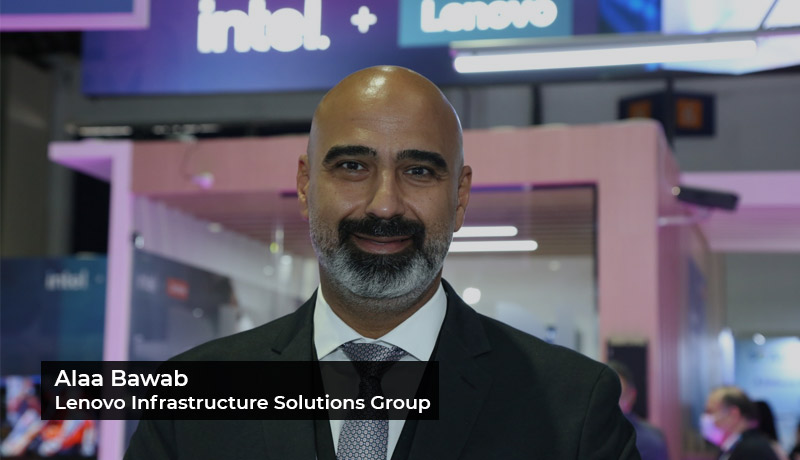
Enterprise enterprises aiming for increased simplicity in their data centres are becoming increasingly interested in hyperconverged infrastructure (HCI). From 2021 to 2028, the hyperconverged infrastructure market in the Middle East and Africa is predicted to rise at a 22.55 percent CAGR.
Much of the complexity of traditional three-tier IT is reduced when server, storage, and networking are merged into single, cluster-readynodes. And, in cases where the HCI supplier has teamed with virtualisation and security software experts, this ease of use can be extended beyond the HCI to other aspects of the company IT landscape.
This is critical for busy IT teams that must support business innovation while also protecting the company and its data from escalating security risks. By the end of 2021, the yearly worldwide cost of cybercrime is predicted to reach $6 trillion, and the average amount paid out by businesses in individual ransomware attacks in Europe, the United States, and Canada has risen from little over $115 thousand in 2019 to $312 thousand in 2020. In this environment, IT teams of all sizes must work effectively if they are to reach their lofty objectives.
We’ll go over some of the ways HCI can help these teams simplify how they maintain IT service continuity and manage data security, freeing up trained employees to focus on high-value business initiatives.
Traditional three-tier on-premises management Specialists in storage, servers, and networking, as well as other areas such as virtualization, are generally required in IT organisations. As a result, keeping up with events and responding to them becomes complicated and potentially time-consuming.
HCI has the advantage of bringing several (or even all) of these component pieces together. Typically, the vendor provides centralised system administration and management tooling for servers, storage, and networking – as well as other data centre infrastructure, edge devices, virtualization software, and endpoints.
This consolidation allows for a smaller staff to manage the environment, with any individual capable of dealing with difficulties at any level, from resource supply through administration, restoring, performance enhancements, and patching. As a result, the company can provide the same (or better) levels of IT support with less resources, allowing experienced workers to focus on strategic innovation projects.
While moving to HCI will necessitate a shift in the IT team’s skill set, it does not have to be a steep learning curve. Smart businesses choose HCI platforms that complement their existing investments and allow them to use talents in technologies like VMware, Microsoft, and Nutanix.
Applying patches and updates on a timely basis is one of the most crucial components of keeping your IT up to date – and thus safe against security risks. However, because of the complications of doing so, such as the need for downtime or testing whether a patch for one component affects another, it’s very uncommon for companies to leave their infrastructure insecure and unpatched for long periods of time.
Lenovo has attempted to address these issues as part of their ThinkAgile HCI product. Customers gain access to fully tested, unified patches that cover all aspects of their solution. Lenovo has also teamed up with top virtualization and other software companies to provide integrated solutions that run on its ThinkAgileHCI infrastructure. One of the advantages is that, if applicable, fixes and updates for other portions of the stack are packed in with HCI updates.
When taken together, these features mean that HCI makes remaining up to current faster, easier, and less risky, allowing IT teams to deliver the most comprehensive security against threats and vulnerabilities.
When a security issue occurs at the infrastructure level, a hyperconverged environment typically requires fewer systems to be restored than a traditional three-tier data centre, and hence is typically faster. Selecting HCI platforms where the manufacturer has incorporated solutions from prominent security, backup, and recovery suppliers into its centralised management software can also speed up recovery.
Real-time data replication across the cluster helps to prevent data loss, and the clustered design can speed up the recovery time following security incidents like ransomware attacks, resulting in less application downtime.
Finally, many businesses are migrating their workloads to the cloud. Choosing an HCI platform based on virtualisation technology from a vendor that also offers cloud services, such as Microsoft, ensures that security is aligned between HCI and public cloud workloads. This alignment can speed up future cloud migrations by consolidating day-to-day security management throughout the entire estate.
Hyperconverged data centre infrastructure can play a significant role as IT teams confront increasing demands to support business innovation while preserving IT availability and protecting the organization’s data. HCI settings, which simplify and streamline IT management and security operations, can be managed by less teams than traditional three-tier systems while preserving or even improving service levels. This frees up trained resources to focus on producing the high-value products and services that the company and its customers demand.
